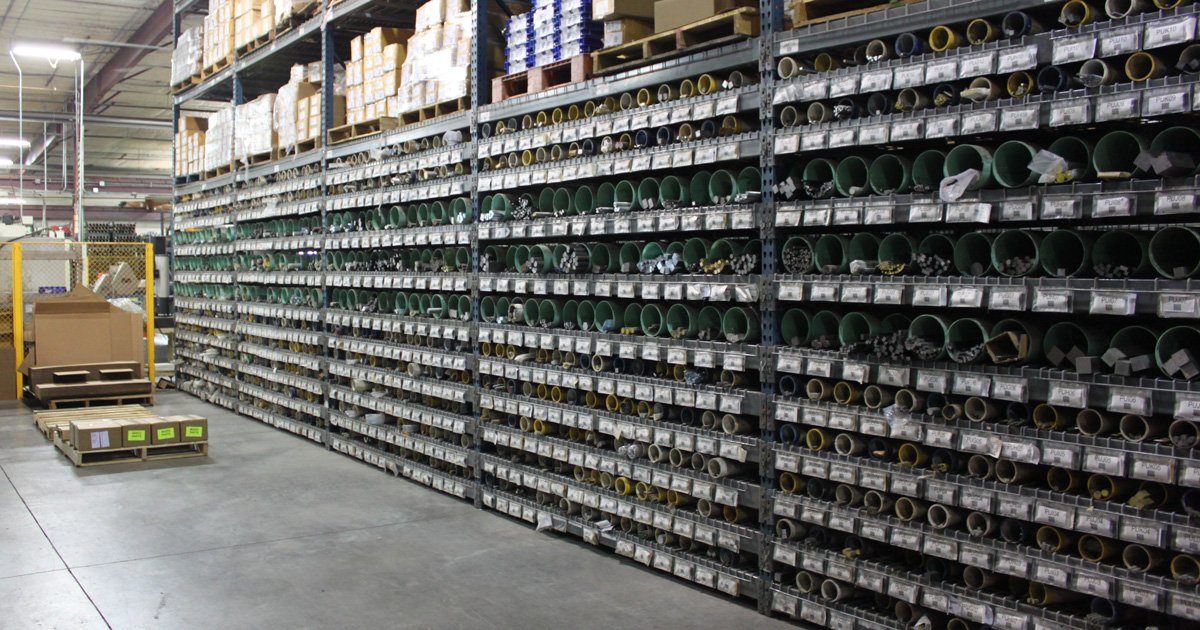- Previous blog
- Next blog
- Huyett Marketing Department
- 07/08/2021

Waste can take many forms in the manufacturing process, but, at its core, waste is anything that does not provide value through the eyes of the customer. Waste drives up costs and hinders a company’s competitiveness in the market, which is why lean manufacturing can be a game changing approach to battle waste.
Lean Manufacturing Practices
Lean practices lead to a stronger focus on customer value. Maintaining a strong customer focus through lean thinking sets the foundation for effectively identifying opportunities that lead to the reduction of waste.
What is Lean?
Lean manufacturing, or lean production, is a set of best practices that focus on maximizing customer value through the elimination of waste. The concept of lean was first introduced to the manufacturing industry by Henry Ford in the early 1900s with the advent of the assembly line. Lean manufacturing was further refined into the Toyota Production System by Kiichiro Toyoda and others of Toyota Motor Corporation shortly after World War II.
What are the Types of Waste?
Waste is anything that is nonvalue add during a process or effort when pursuing an objective. Toyota identified seven kinds of waste — Transportation, Inventory, Motion, Waiting, Overproduction, Over-Processing, and Defects. It was not until the 1990s when “Skills” (unused creativity) was added to the list.
1. Transportation
Transportation is the non-value-added movement of product that wastes time and resources. The only movement of product that adds value is when it moves to a customer. Unnecessary transportation also increases wear and tear on people and equipment. Strategically positioning personnel, equipment, materials, and products to reduce distance traveled can effectively reduce waste in transportation.
2. Inventory
Inventory costs money to store and handle. Time is wasted counting and moving inventory that is not en route to a customer. Inventory not only includes goods but also customer backlog, unused files, and broken equipment that take up space. Space that is being used by unused inventory is considered wasted space.
3. Motion
Waste in motion (closely related to transportation) is the unnecessary movement of people or equipment. Walking back and forth to and from a workstation is an example of excess motion. Tasks or processes that require excessive motion should be evaluated and optimized.
4. Waiting
Waste in waiting comes in the form of idle equipment or people caused by bottlenecks in the production process somewhere upstream. Designing processes to ensure a continuous workflow or developing work instructions are two methods for remedying this issue.
5. Over-Production
Producing parts that people do not use is wasteful. Overproduction not only increases risk of ownership if the production becomes obsolete, but overproduced parts increase storage and transportation requirements. Some methods for reducing overproduction include using a Kanban system, ensuring rate of manufacturing stations is even, and reducing setup times to enable small batch flow.
6. Over-Processing
Waste in over-processing occurs when more work is added to a process than what is required. This can come in the form of adding more features to a product than what is required, adjusting something that is already installed, or over engineering a solution. Some causes of over-processing are from not having clearly defined standards or specifications. To reduce over-processing, it is important to have a clear understanding of the quality and quantity of work the customer desires.
7. Defects
Defective products are perhaps the most costly of waste. Not only does an organization lose invested costs in a finished part, but additional material costs and resources are wasted reworking products to meet the customer’s needs. Adhering to standards greatly reduces the risk of defects.
8. Skills (Unused Creativity)
Failure to listen to creative ideas or investment in creative thinking is wasting good use of a company’s human capital resources. Having a culture that recognizes strengths and contributions of employees encourages creativity resulting in increased problem solving from everyone involved.
Continuous Improvement
Lean manufacturing is not a single action or project, but rather a commitment to ongoing process improvement. Continuous improvement requires a company to critically evaluate its processes and set benchmarks for performance to measure success. A deep understanding of a process and how that process affects value to the customer provides the basis for employee training and coaching opportunities. These activities lead to more efficient processes, higher employee engagement, and fosters a culture of excellence.
It is important to understand that not all waste can be removed. Continuous improvement is akin to perfection. It can never be attained, but we are all made better by the pursuit.
All In A Day’s Work
Minimizing waste in the manufacturing industry is an iterative, never‑ending process, but each day brings new opportunities. At Huyett, our standards are high, striving for consistent delivery of the absolute best for all of our customers.